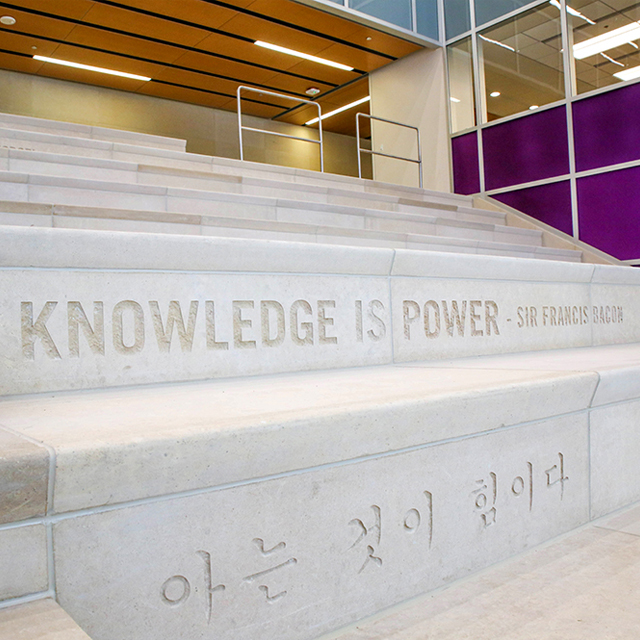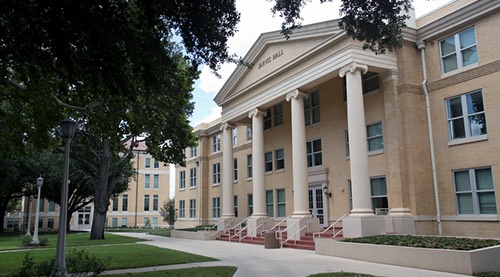Harassment & Discrimination

Step 2:
OIE staff will respond.
Step 3:
OIE staff conducts initial inquiry.
Step 4:
OIE staff resolves report.
Harassment and discrimination that occurs based on one or more of the following protected characteristics are prohibited by law and TCU Policy 1.008:
- Age
- Color
- Disability
- Gender
- Gender Identity or Expression
- Genetic Information
- National or Ethnic Origin
- Race
- Religion
- Sex
- Sexual Orientation
- Veteran Status
The unlawful treatment of an individual based on the individual’s age, race, color, religion, sex, sexual orientation, gender, gender identity, gender expression, national origin, ethnic origin, disability, predisposing genetic information, covered veteran status, and any other basis protected by law that unreasonably interferes with or limits an individual’s ability to participate in or to realize the intended benefits of an institutional activity, employment, receipt of reasonable accommodations or other resource.
Examples of discrimination behavior may include the following:
- a faculty member giving a student a lower grade because of the student's race;
- a staff person receiving a negative performance review based on sexual orientation;
- a student with a disability who does not receive academic accommodations from their instructor.
Generally, harassment is a form of discrimination that is that is unwelcome verbal or physical conduct based on an individual’s age, race, color, religion, sex, sexual orientation, gender, gender identity, gender expression, national origin, ethnic origin, disability, predisposing genetic information, covered veteran status, and any other basis protected by law that is severe, persistent or pervasive that it would create a hostile work or learning environment.
A hostile environment can be created by persistent or pervasive conduct or by a single or isolated incident, if sufficiently severe. The more severe the conduct, the less need there is to show a repetitive series of incidents to prove a hostile environment, particularly if the conduct is physical. A single incident of non-consensual sexual contact or intercourse, for example, may be sufficiently severe to constitute a hostile environment. In contrast, the perceived offensiveness of a single verbal or written expression, standing alone, is typically not sufficient to constitute a hostile environment.
Retaliation is an any action taken against any person because the individual filed a good faith report or formal complaint alleging conduct of the type prohibited by this policy or because the individual has testified, assisted or otherwise participated in an investigation of conduct of the type prohibited by this policy or in related proceedings. Retaliation can take many forms, including, but not limited to, adverse action or violence, threats, acts of intimidation, other acts of harassment or discrimination.
A bias incident is an act or behavior motivated by the offender’s bias against another’s identity which may include but is not limited to, race, color, religion, sex, sexual orientation, gender identity, gender expression, national origin, immigration status, age, disability, genetic information or covered veteran status. Bias occurs whether the act is intentional or unintentional, may be directed toward an individual or group and may be initiated by an individual or group. A bias incident may contribute to creating an unsafe or unwelcoming environment.
Racial and Ethnic Stereotype Themed Events - Student organizations or individuals who host theme parties that encourage people to wear costumes and/or act out in ways that reinforce racial and/or ethnic stereotypes are bias incidents that do not reflect an inclusive community.
Bias in the Classroom - Instructors who make comments based on assumptions, biases or stereotypes about a protected class of people, i.e. females, religious minorities, racial minority groups, or people with disabilities are exhibiting behaviors that would constitute a biased incident.
Bias in the Work Place - Making comments, jokes, or gestures based on protected class identity may create a hostile work environment. Even displaying pictures and items that convey sexually inappropriate messages may also contribute to the climate in the workplace.
A microaggression is defined as “brief and commonplace daily verbal, behavioral, or environmental indignities, whether intentional or unintentional, that communicate hostile, derogatory, or negative...slights and insults. (Wing Sue, 2007) A microaggression, while inappropriate and sometimes hurtful, does not rise to the level of illegal harassment or discrimination in most cases.
Experts have identified three types of microaggressions:
- Microassaults – Direct and explicit verbal or nonverbal communications that intend to express a purposeful and discriminatory statement.
- Microinsults – Comments that communicate rudeness, insensitive or that potentially demean a person’s racial heritage or identity. Many times, the person may believe that they are delivering a compliment but they are actually communicating an insult.
- Microinvalidations – Verbal comments or behavior that negate, nullify or reduce the experiential reality of a person of color. These are actions and behaviors that deny racism and discrimination. Invalidations occur when a person undermines the struggles of target groups.
Microaggressions in the Classroom:
- Using heteronormative metaphors or examples in class.
- Using inappropriate humor that degrades students from different identity groups.
- Asking individual students to represent the opinions and/or belief from a particular affinity group
- Failing to correctly pronounce the names of students after a student has provided correct pronunciation multiple times.
Microaggressions in the Workplace:
- Referencing that affirmative action was the reason a colleague received a promotion or hire
- Complimenting a person of color by stating they “are so articulate” or “speak very well” in a meeting
- Asking someone of ethnic descent, “Where are you from?”
Microaggressions in the Community:
- Grabbing your personal belongings or crossing the street to avoid a male or color
- Saying something like, “I don’t see color, I treat everyone the same.”
- Touching someone’s hair who has an ethnic hairstyle
A hate crime occurs when there has been a violation of a state's criminal laws, and that violation of the law was motivated, in whole or in part, by the offender's bias toward the victim's actual or perceived age, color, disability, gender identity or expression, genetic information, marital or familial status, national or ethnic origin, race, religion, sex, sexual orientation or veteran status.

Make an OIE Report
The OIE will respond to allegations of discrimination, harassment, retaliation, and sexual misconduct, including Title IX reports.




